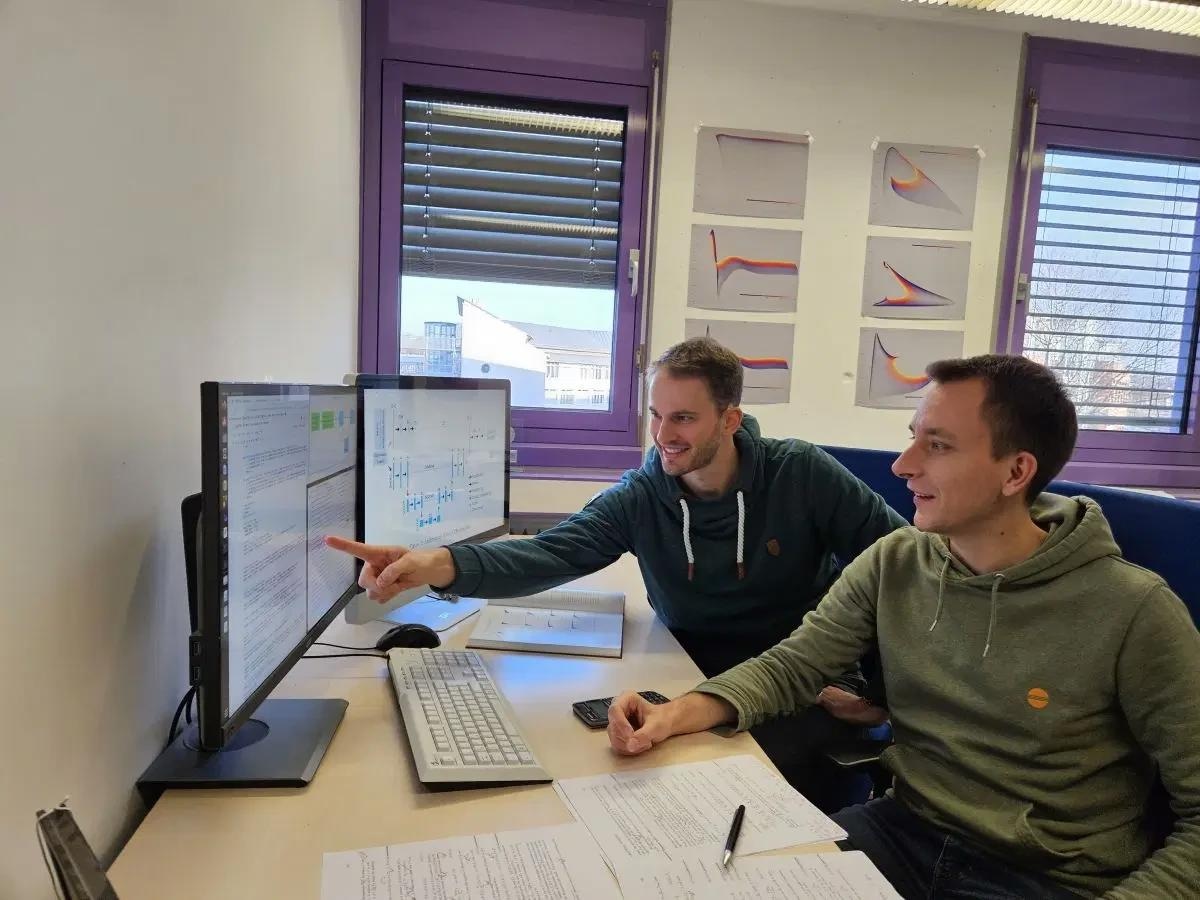Scientists at Bayreuth are employing mathematical models based on Einstein’s theory of relativity to study the long-term behavior and structure of galaxies. Their novel method makes rapid predictions about the stability of galaxy models by utilizing a deep neural network. Astrophysical theories can be efficiently verified or refuted in a matter of seconds using this artificial intelligence-based technology.

Image Credit: University of Bayreuth
Dr Sebastian Wolfschmidt and Christopher Straub’s goal is to learn more about the long-term behavior and structure of galaxies.
Since these cannot be fully analyzed by astronomical observations, we use mathematical models of galaxies. In order to take into account that most galaxies contain a black hole at their center, our models are based on Albert Einstein’s general theory of relativity, which describes gravity as the curvature of four-dimensional spacetime.
Christopher Straub, Ph.D. Student, Chair of Mathematics VI, University of Bayreuth
Although many unanswered concerns surround the attributes of such galaxy models, mathematicians and astrophysicists have been studying them for decades. Straub and Wolfschmidt have used a deep neural network, which is an entirely novel method in this field of study, to help resolve these problems.
Strong computational models with a structure modeled after the human brain are called neural networks. They are employed in artificial intelligence to find intricate patterns in vast volumes of data.
The neural network can predict which models of galaxies can exist in reality and which cannot. The neural network delivers a significantly faster prediction than the numerical simulations used in the past. This means that astrophysical hypotheses that have been put forward over the past decades can be verified or falsified within a few seconds.
Dr. Sebastian Wolfschmidt, Research Associate, Chair of Mathematics VI, University of Bayreuth
The results have now been published in the journal Classical and Quantum Gravity by Wolfschmidt and Straub.
Straub added, “We have been working on these issues at the Chair of Mathematics VI in Prof. Dr. Gerhard Rein’s research group since 2019. After various analytical and numerical investigations, we realized about a year ago that the use of machine learning can be particularly helpful for some of our problems. Since then, we have developed the deep neural network described above and already have plans for further applications of similar methods.”
The supercomputer of the University of Bayreuth’s “Keylab HPC” performed the computations for the Bayreuth mathematicians. The project was the result of a partnership with the Chair of Applied Computer Science II - Parallel and Distributed Systems.
Journal Reference:
Straub, C., et. al. (2024). Predicting the stability of star clusters in general relativity. Classical and Quantum Gravity. doi:10.1088/1361-6382/ad228a